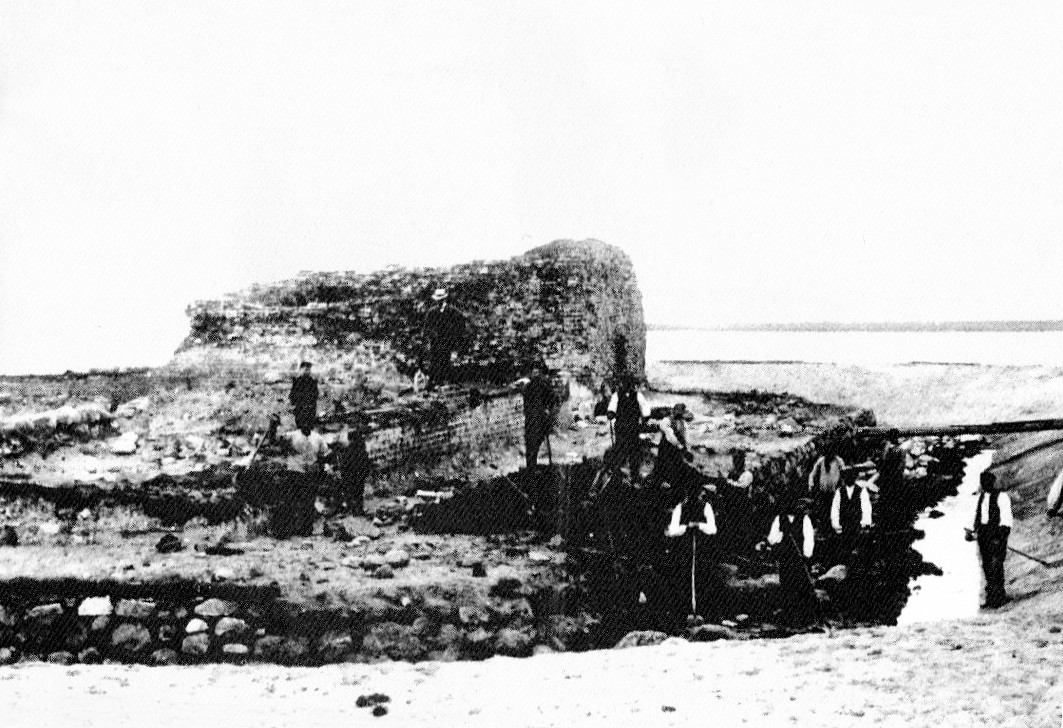

In the heart of the popular Burgtiefe holiday region, you will discover a special place steeped in history: the Glambek castle ruins! This medieval fortress, dating back to 1210, tells an eventful story of Danish kings, Holstein counts, and dramatic battles.
You can view the remaining walls and imagine how lively celebrations were once held here and important peace negotiations took place.
An interesting historical stop during your walk between South Beach and the marina!
The Glambek castle ruins are the remains of a medieval lowland castle built in Burgtiefe in 1210 by the Danish king Waldemar II. The rectangular complex measures 36 meters wide and 53 meters long and is surrounded by a moat and a low rampart.
Address: Zur Strandpromenade 1, 23769 Fehmarn OT Burgtiefe
The castle ruins are strategically located on the Burgtiefe peninsula in the south of Fehmarn, at the western end of the headland that separates the Burger Binnensee lake from the Baltic Sea. You will find them in the immediate vicinity of the popular South Beach and the Burgtiefe marina.
Important visitor information:
Estimated length of stay: Maximum 10-15 minutes, preferably less. Plan it as a short stop during a walk on South Beach.
What you should bring with you:
Accessibility: As the tour takes place entirely on public roads, it is easily accessible.
Best time of year: Possible as a short stop all year round, best in combination with other activities.
Insider tip: Don't set your expectations too high – the historical significance is greater than what can be seen today. Be sure to combine your visit with a trip to the nearby South Beach!
The castle ruins are more of a historically interesting point along the way than an attraction in their own right. Perfect for history buffs, but not a spectacular sight.
In 1210, Danish King Waldemar II had Glambek Castle built as a mighty brick fortress with four-meter-high ring walls for his bailiff. The castle ruins were once considered the most important site in the island's history. In the 13th and 14th centuries, lavish celebrations and peace negotiations took place here.
The castle became a bone of contention between Danish kings and Holstein counts. In 1416, the Danish king Erik of Pomerania conquered Fehmarn and had the castle commander of Glambek beheaded. Particularly dramatic: in 1420, King Erik returned with 700 ships, destroyed the castle, ravaged the island, and murdered two-thirds of the population.
From 1558 onwards, the castle was used only as a warehouse for wood and grain until it was finally destroyed in 1628 during a battle in the Thirty Years' War. Most of the stones were removed and the ruins disappeared under drifting sand.
It was not until the storm surge on November 13, 1872, that they were washed free again.
In 1908, Miss Klare Mackeprang from the Staberhof estate gave permission for the site to be cleared and provided a large sum of money for the excavation.

Scientific significance: The castle ruins are probably the only medieval castle complex in Schleswig-Holstein where brick walls are still standing.
Vision for the future: Tourism director Oliver Behncke explains: “Our long-term goal is to use the area within the castle ruins as an event venue that is unique in this form.”
The Glambek castle ruins offer an interesting historical insight into Fehmarn's medieval past. Even though only a few remains can be seen today, this place tells a fascinating story.
As a quick stop during your visit to South Beach, it's worth a look for anyone interested in the island's history—with realistic expectations of what is still visible today.
You have booked a Vacation accommodation on Fehmarn and are looking for more Sights on Fehmarn or want to Rent sports equipment or beach chairs? Then follow the links for more information.